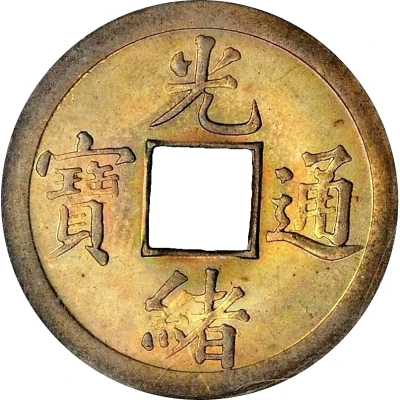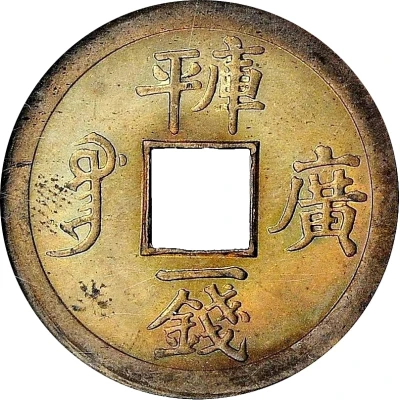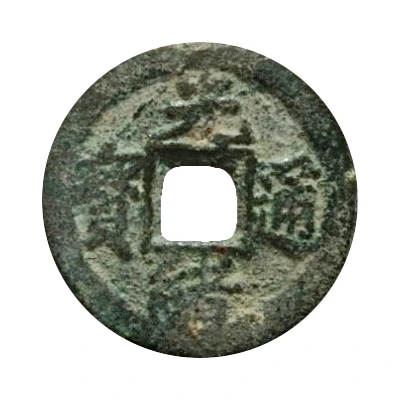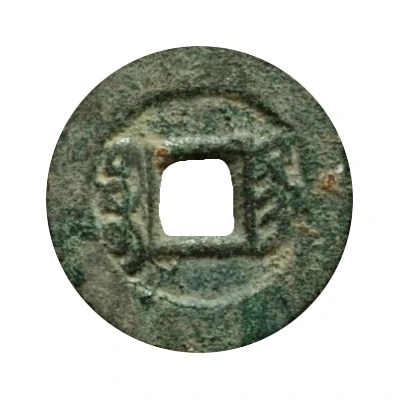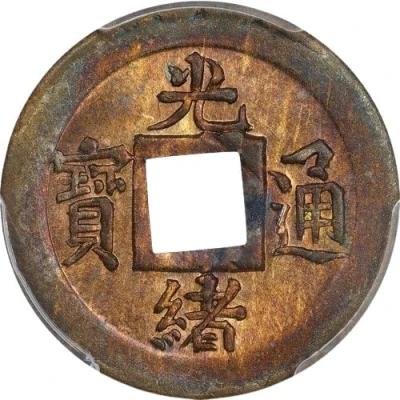
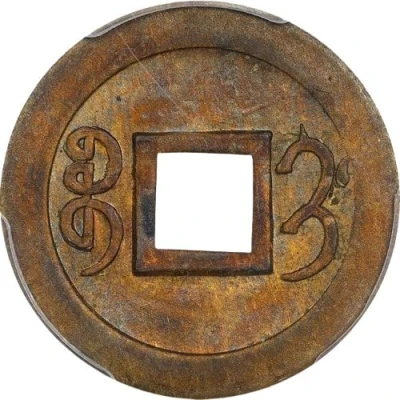

© Stacks Bowers
1 Cash - Guangxu Tongbao; Boo-gi; struck ND
| Brass | 3 g | 21 mm |
| Issuer | Empire of China |
|---|---|
| Emperor | Qing dynasty › Guangxu (光緒帝) (1875-1908) |
| Type | Standard circulation coin |
| Years | 1889-1890 |
| Value | 1 Cash |
| Currency | Cash (621-1912) |
| Composition | Brass |
| Weight | 3 g |
| Diameter | 21 mm |
| Shape | Round with a square hole |
| Technique | Milled |
| Orientation | Medal alignment ↑↑ |
| Demonetized | Yes |
| Updated | 2024-10-04 |
| Numista | N#226739 |
|---|---|
| Rarity index | 91% |
Reverse
Two Manchu words (read vertically) separated by the hole.
Script: Mongolian / Manchu
Lettering: ᠪᠣᠣ ᡬᡳ
Translation: Boo-gi
Edge
Plain
Comment
Krause says that the date for this type is “ND(ca.190)”, which could be interpreted as either 190(0) or 1(8)90. Hartill gives a date range between 1889-1890.
According to Hartill, these struck coins started to be minted in 1889, after Zhang Shun became the General of Jilin in October of the same year, and bought machinery from Shanghai to strike coins with. This thus makes Hartill's range of 1889-1890 the most likely.
These coins have a nominal weight of 8 fen/0,8 qian (2,98 g), but the exact weight varies between coins.
Interesting fact
One interesting fact about the Standard circulation coin 1 Cash - Guangxu (Tongbao; Boo-gi; struck) ND (1889-1890) from Empire of China made of Brass weighing 3 g is that it was designed by a French sculptor named Jean-Antoine Injalbert, who was commissioned by the Chinese government to create a new coinage system for the country. The design of the coin features a dragon on one side and the Chinese characters "通宝" (Tongbao) on the other, which means "circulating treasure." This coin was minted during the reign of Emperor Guangxu, who ruled China from 1875 to 1908, and it was used as a standard unit of currency throughout the country during that time.
